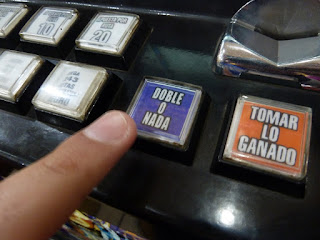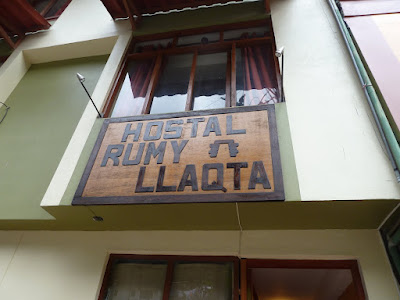‘Ollanta’ (Oyantah) is a small town in the Sacred Valley. It was the site of a famous battle between the Incas and the Spanish, after the Emperor Manco Inca and his forces were defeated at Sacsahuaman. What makes this battle different however, is that the Incas won the battle of Ollantaytambo, one of the only military victories they could muster against the superior Spanish troops (who were known throughout Europe as the fiercest warriors).
The town itself is one of the best remaining examples of Inca town planning, as most of the original buildings are intact in the four or so roads which delineate the town centre. What strikes you as you walk through the streets, is that despite being an almost unspoilt relic to Incan history, all the original Inca houses alleys and canals remain fully functioning, with the local inhabitants living and working in houses built for Inca emperors, princes and concubines.
But the most impressive and striking aspect of Ollanta is the steep terraces come fortress towering above the town on the slopes of the valley wall. The sites’ main purpose was a religious one, but is easy to imagine the dread the Spanish forces would have felt, arriving in the valley and seeing the steep terraces filled with native fighters and recruited archers from the jungle tribes.
On our first day we walked around the sprawling ruins, which offered up great views of the mountains surrounding the valley as well as a great view down the Urubumba valley towards Aguas Calientes.
 |
Looking out over The Sacred Valley from terraces at Ollanta
|
 |
| Ollanta |
 |
| Overlooking the town |
We spent the second day hiring a taxi to take us around some of the surrounding sites. We drove through the town of Urubumba and to the salt mines of Maras. The winding roads were pretty scary, especially for Mish – particularly given the condition of our taxi, which was pretty good for Peru, but would in no way, shape or form pass a green slip examination in Oz.
The actual salt mines were not bad, set against steep hills and again looking out through a small fold onto the valley below.
 |
Salt mine in the hills near Ollanta
|
We also visited the Inca site of Moray, which are huge depressions in the earth, which the Incas’ lined with terraces. It has been shown that the temperature changes dramatically between each level of terracing, and it is thought that this area was used as a kind of laboratory, where the Incas would develop new species of corn, coca and potatoes - you could say it is one of the first genetic engineering laboratories.
 |
Terraces at Moray
|
We mostly ate at one restaurant in Ollanta, which was very nice, Paku Rumy. Most of the restaurants in Ollanta are pretty empty, as the only people who seem to come here are on day trips from Cuzco to see the ruins.
Other highlights of Ollanta:
- Seeing local children playing in the canals which run through the streets;
- (Perhaps disturbingly, given the above point) Seeing a recently slaughtered pig, being gutted and cleaned in the canal which run behind our hostel – this answered my question about whether you could drink the water in the canals...;
 |
Circle of life
|
- Some guy fell off his motorbike on the road to Moray, so we had to help pull the bike back up the hill;
 |
Motorbike overboard
|
- Eating my first Anticuchos, thinly sliced beef on skewers;
- Crazy festival in the town on our last day;
- Eating at Hearts Café, decent food with proceeds going towards charitable initiatives in the Sacred Valley.























































